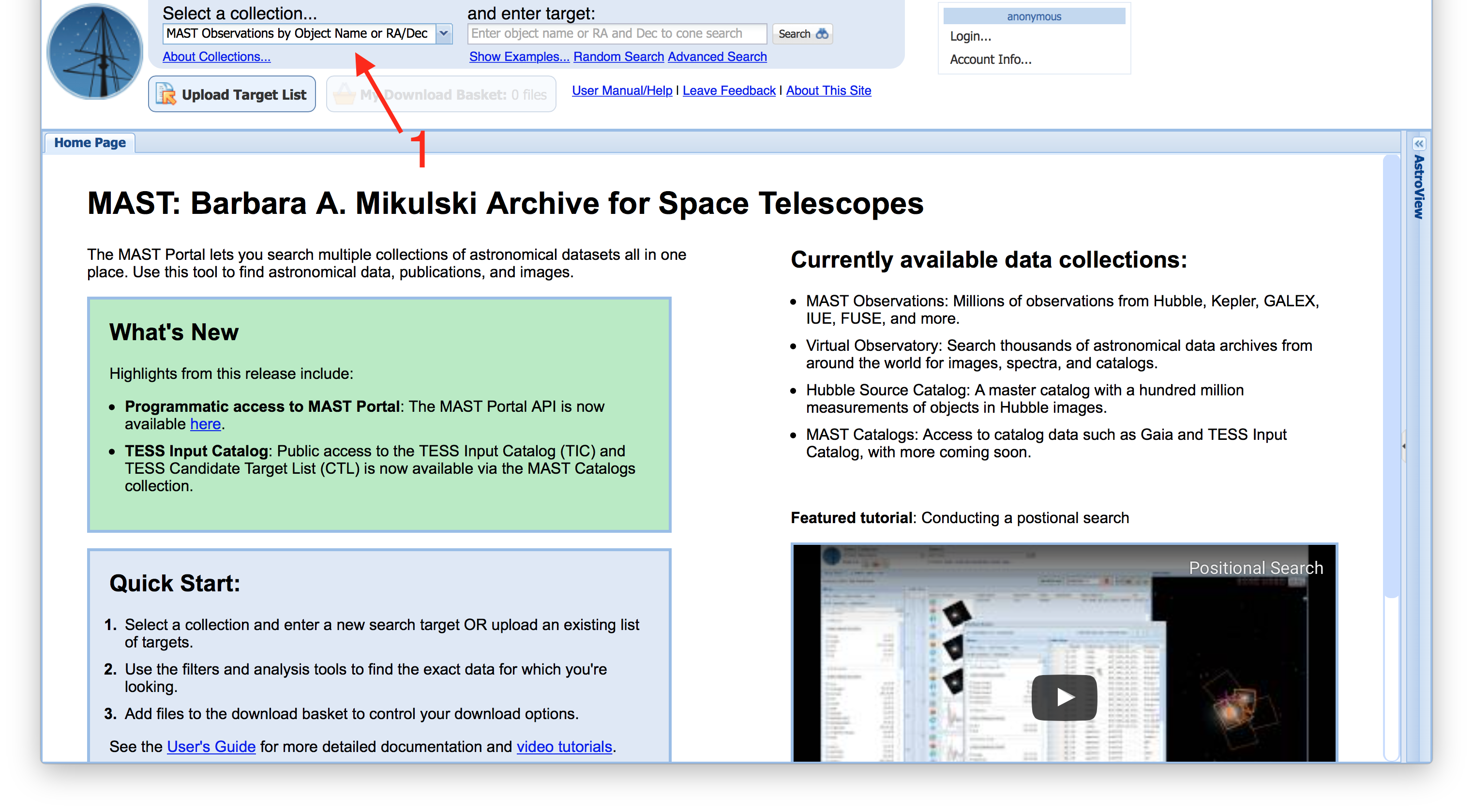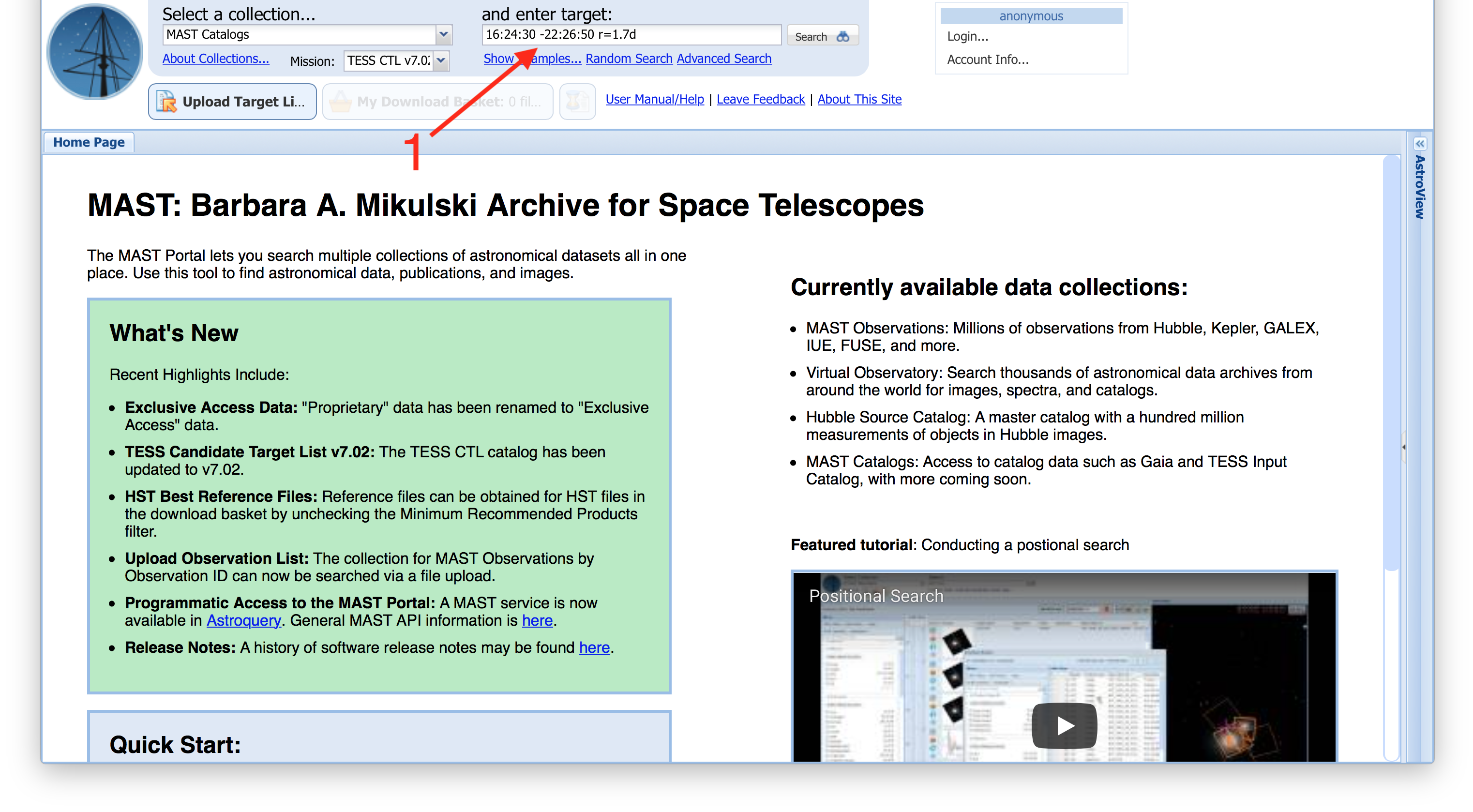This tutorial will show you how to do a search on a single coordinate, within the TESS Exoplanet Candidate Target List (exoCTL) in the MAST Portal. Specifically, we will do a search centered on the K2 Campaign 2 field.
Upon visiting the MAST Portal, the first step is to change the collection of data we are searching in from the Context menu (Item #1) at the top left. |
From the Context drop-down menu, select MAST Catalogs, then, in the Mission drop-down menu that appears (Item #1), select TESS CTL v7.02 for the exoCTL list. Note that the version number will change as newer editions replace older ones in the Portal. |
We are now ready to do a target search by entering text into the Search Box (Item #1). The Search Box can accept coordinates in either decimal degrees or in sexagesimal format. You can specify a search radius by adding r = and then your desired radius. For example, r = 0.3d is a 0.3 degree search radius, r = 5m is a 5 arcminute search radius, and r = 3s is a 3 arcsecond search radius. For our example, we'll search on the K2 Campaign 2 field center located at 16:24:30 -22:26:50 with a search radius of 1.7d, which is roughly the size of a Kepler module. Note that this search may take a while, since searches with radii larger than a degree typically return a lot of rows. |
We now see the results of our search. First, note that the default search radius is often assigned to be a 0.2 degree radius (Item #1). Exceptions are for any objects resolved by external services (like NED) that have object radii defined for them, e.g., extended objects like galaxies or clusters. These can always be changed by specifying your search radius (see the Show Examples link below the search box for examples). |
We'll do a quick filter to demonstrate how to select subsets. In the Filters panel on the left (Item #1), we'll scroll down to the Luminosity Class From RPM subpanel (tip: use your browsers "search" to locate the text on your screen quickly), and check the box to only select those targets identifed as dwarfs by the reduced proper motion diagram. Note: you can use the Edit Filters... link at the top of the Filters panel to add or remove any columns from the Filters panel, not every column will show up by default in the Filters panel. You can see in the AstroView the results of selecting only these targets (Item #2). |
You can save the search results at any time using the Export Button (Item #1). From the dialog menu that appears, you'll be able to select the format of your output file and whether you want to export all the available columns in the catalog, or only those that are currently displayed in the Search Results Grid. |


